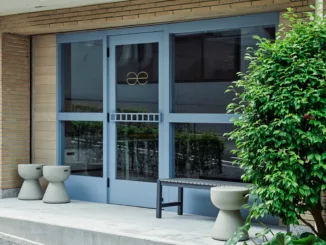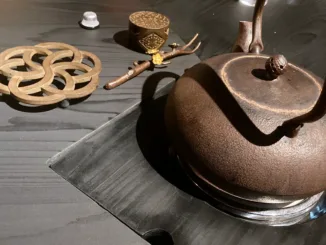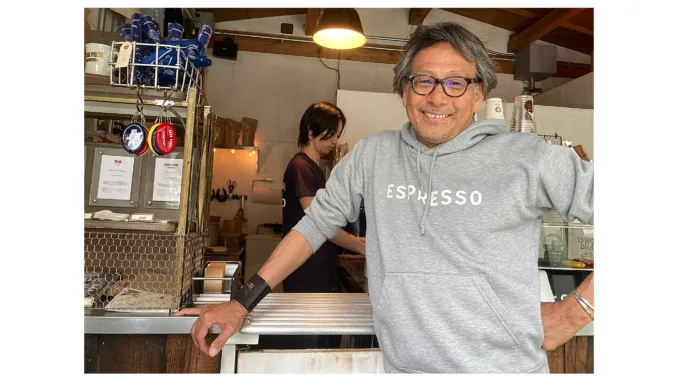
What exactly is a “Dirty“? We meet the menu item’s creator and discover its true origin.
BY TANYA NANETTI
SENIOR ONLINE CORRESPONDENT
Featured photo by Tanya Nanetti
I discovered the existence of the “Dirty“ while spending time in Bangkok. A large percentage of specialty-coffee shops had it on the menu, often advertising it as their signature drink. The problem was that each prepared its own type of Dirty, serving a coffee drink that often had very little in common with the one I had tasted just half an hour earlier in another café.
Gathering clues from each Dirty I tried, I concluded that it was always served cold—but not over ice—and prepared with cold milk (sometimes), over which a double shot of espresso was poured to create a beautiful visual effect. But the similarities stopped there, because sometimes the Dirty included cream, or sugar syrup, or even black sesame!
I found that many baristas attributed the origin of the Dirty to someone in Japan, while some were convinced that it was a Thai creation, born on the outskirts of Bangkok. Even the internet was not entirely clear on its history.
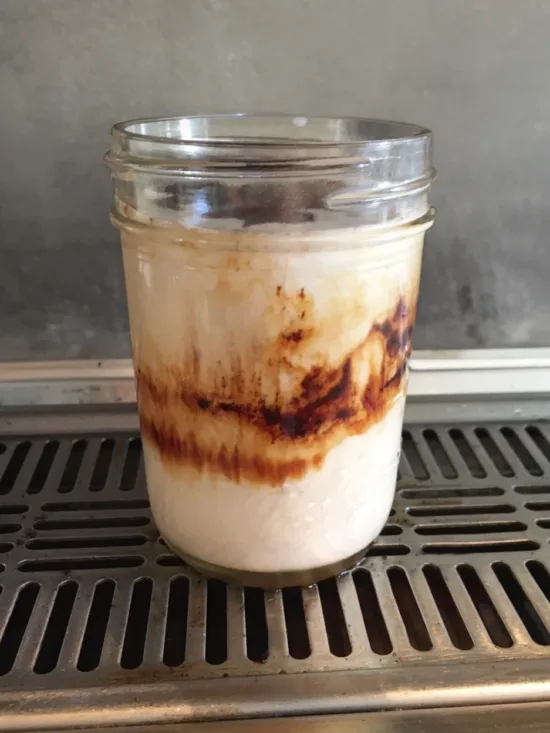
The Originator, Katsuyuki Tanaka
I lucked out in Bangkok, while on a visit to a beautiful specialty-coffee shop called Sometimes I Feel. Here I found a clue: The Dirty on their menu was dedicated to a certain Katsuyuki Tanaka. Kasom, the owner of Sometimes I Feel, explained that Katsuyuki is a Japanese coffee-shop owner and barista who is also the inventor of the Dirty.
Moreover, he added, Katsuyuki is quite an interesting character—a sort of local coffee celebrity both in New York (where he lived and worked for almost two decades) and in Tokyo (where he returned in 2009 to found Bear Pond Espresso). Katsuyuki also appeared in the 2014 documentary “A Film about Coffee” and is often referred to by his nickname, Angelstain.
A few weeks later, eager to get to know Katsuyuki and determined to learn more about this “mythical” Dirty, I contacted him to arrange a visit to his Bear Pond Espresso during my upcoming trip to Tokyo. And that’s how, on a rainy spring morning, I found myself entering a cozy café in the bohemian neighborhood of Shimokitazawa.
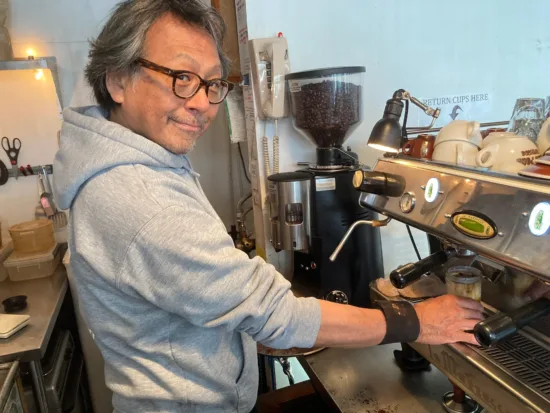
Trying Out the Dirty
After a quick introduction, Katsuyuki jumped behind the counter and prepared his famous Dirty following a few perfectly thought-out steps.
First, he half-filled a small mason jar with cold whole milk. Then he brewed the espresso, using a very finely ground, heavily tamped coffee. This produced a thick espresso that, drawn directly over the milk, gave what Katsuyuki called “the first ring.” At that point it was time to pour more milk (almost to the brim) onto the extracted espresso and pull another thick shot on top to get a second ring. And that was it.
Following Katusyuki’s suggestion, I immediately tasted my Dirty, savoring the different layers: The first sip was mostly coffee-like, chocolatey and full, then came the taste of milk, sweeter and richer. Finally, after a few minutes, the resulting drink was a perfect mix of espresso and milk.
I was surprised by this interesting beverage, perfectly balanced between the strong espresso (which, although dark, was not bitter) and the creamy milk. I sat down with Katsuyuki to learn more about the creation of the Dirty, starting with the base: the syrupy espresso shot that gives the drink its characteristic layers.
“When I make a syrupy-bodied espresso shot, I focus on the change in taste as the espresso flows down,” Katsu explained. “Then, when I move the demitasse cup at the right time, sometimes espresso stains appear on the rim of the cup: For me, these stains are proof of the sincerity of the espresso. In New York, I used to refer to these special espresso stains as ’angel stain,’ and suddenly it became a hot topic among my coffee friends in town, and that’s where my nickname came from.“
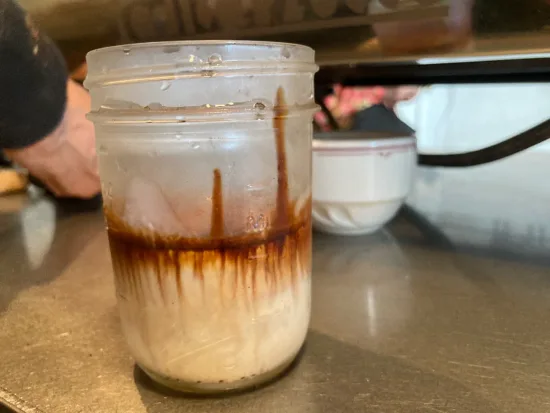
Birth of the Dirty
“It was the summer of 2010,“ Katsuyuki said, “when a hair salon owner ordered a cup of iced latte to go, but once she brought the drink to the salon, she could not drink it right away because clients were waiting for her. Over time, the ice melted and the iced latte became watery. After hearing this story, I came up with the idea of Dirty (which I named because of the way my syrupy-bodied espresso dirtied the beautiful, pure, silky white milk), an iced coffee drink that doesn’t become watery even after a while: I invented it myself and completed the two-layer ring project.“
A few months later, a reporter from The New York Times visited his store, and Katsu made him a Dirty. “At the time (it) was a simple drink made from my full-bodied, syrupy espresso poured into cold milk without ice. A year later, when he came to see me again, he said he had never seen espresso poured over cold milk without ice, and encouraged me to continue making this drink. At first, I poured my full-bodied, syrupy espresso into cold milk: I thought that with this concentration of espresso, if I added milk, an espresso ring would appear halfway through, so after much trial and error, I created the espresso ring at halfway of (an 8-ounce) Ball Regular Mouth Mason jar. Next, I collected a lot of data: I observed the roasting data and the espresso coming out of the jar and compiled the data. To create Dirty’s perfect espresso, I considered several factors, including brew ratio, brew time, and brew temperature, as well as other possible variables that could affect any of these three factors, such as grind size, water pressure, and tamping pressure.“
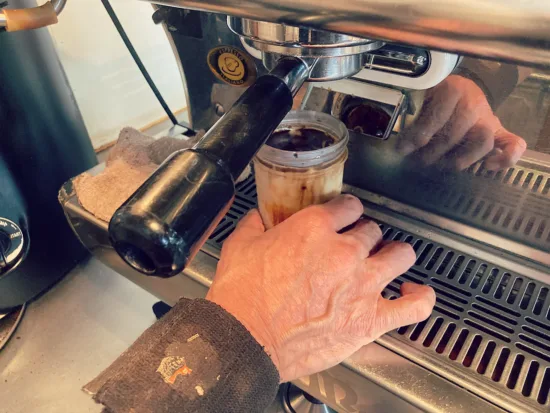
How to Build a Dirty
About the espresso ring, Katsu added that to prepare the perfect one, “It is good to remember that it was created through numerical analysis to enhance the visual appeal of the Dirty.” The technique involves the production of finely ground dust particles: When agitation is introduced into the extraction process, these fines undergo a phenomenon called “fine migration,“ sinking to the bottom of the coffee puck, reducing the flow rate and allowing for reduced agitation and extraction. The most important visual element of the Dirty is the espresso ring in the middle of the jar; the ring is what defines the Dirty.
When I asked Katsu for his preferred Dirty ingredients, he was happy to share. “For milk, I use high-quality raw milk, with a fat content of 3.6% or more throughout the year. For espresso beans, I use Bear Pond Espresso’s original Flower Child blend, but the Dirty is a drink that requires a barista’s skill, even in choosing the best ingredients: Use the milk and coffee beans you prefer that will give you the best result.“
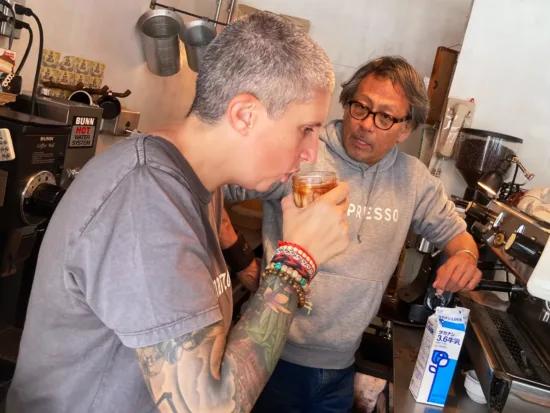
Not Your Typical Drink
One thing that sets apart the Dirty is that you can drink it at your own pace. “The first sip of my Bear Pond Espresso Dirty has 80% dark chocolate espresso flavor and 20% milk; the second sip has 20% dark chocolate espresso flavor and 80% milk,“ Katsu explained. “And if you leave it as it is, it becomes 50% dark chocolate espresso flavor and 50%, so you can appreciate the change in flavor as a cold latte that doesn’t become watery.“
Before I left to continue my exploration of Tokyo, I had one last question for Katsuyuki: Is he happy with the different versions of his creation at various shops in Bangkok and beyond?
“I am very happy that they were all inspired by the Dirty,” Katsuyuki answered. “But there are also recipes written by numbers, so it would be a shame if you simply drip espresso into cold milk without ice. I think my job as the inventor of Dirty is to share the official recipe for two espresso rings around the world.“
ABOUT THE AUTHOR
Tanya Nanetti (she/her) is a specialty-coffee barista, a traveler, and a dreamer. When she’s not behind the coffee machine (or visiting some hidden corner of the world), she’s busy writing for Coffee Insurrection, a website about specialty coffee that she’s creating along with her boyfriend.
Subscribe and More!
Out now: It’s the June + July 2024 issue of Barista Magazine! Read it for free with our digital edition. And for more than three years’ worth of issues, visit our digital edition archives here.
You can order a hard copy of the magazine through our online store here, or start a subscription for one year or two.



